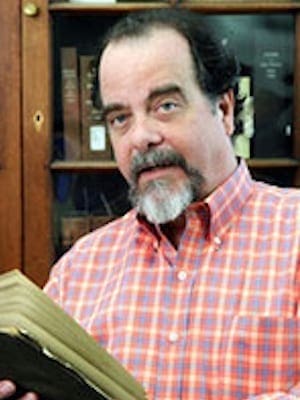Early this morning some men in top hats and tuxedos pulled a groundhog from a plush burrow in Punxsutawney, Pa. In the glare of cameras, the leader of the group pronounced whether or not “Phil” had seen his shadow. “No” meant an early spring. “Yes” warned of another six weeks of winter. Or so goes the legend.
Where did it all begin?
Feb. 2 happens to be the very dead of winter, midway between the winter’s solstice and the vernal equinox. In an agricultural society, the dead of winter posed challenges. Would the grain and hay last through the rest of the winter? Would dwindling larder supplies last until fresh produce could be harvested?
For medieval Christians, the dead of winter also came 40 days after the celebration of Christmas. Traditionally that 40th day would have been when Mary, the mother of Jesus, would have performed a ritual act of purification that was to follow every birth (Luke 2.22-40 records the event).
Commemorating the day of the purification, the faithful would parade with candles. For some reason those same people came to associate the weather on the day of Candlemas (the day of the parade) as a portent of the character of the remaining days before springtime. Good weather would mean larger crowds and a brighter celebration, the promise of a mild end to winter. Bad weather would mean smaller crowds and fewer candles, the threat of a harsh winter dragging on until the middle of March.
When German immigrants came to Pennsylvania in the late 19th century, they brought with them a combination of religious faith and agricultural savvy. They had observed that mild weather in late winter brought out the badgers back home, around the same time they were celebrating Candlemas. In the New World they saw groundhogs and transferred to those native rodents traditional weather wisdom.
Associating the celebration of Candlemas with the folklore of a groundhog’s ability to interpret the weather must have seemed like a good move. We cannot deny that the notion as stuck, at least in popular culture.
Groundhog Day is great fun. Some might smirk at the thought of such fun and the pretense of offering interpretations of the world around us. Others might take offense that reading the signs of nature could in any way have credibility in a modern religious context.
Among the offended smirkers we could not find Jesus of Nazareth. On the contrary, the Gospel of Matthew reports that Jesus claimed that attention to the pulses of nature could be the very kind of attentiveness that helped people see what God is doing in the world. His words in Matthew, “You know how to interpret the appearance of the sky, but you cannot interpret the signs of the times” (16.2-3), is a challenge to all who wonder about God’s presence in the world.
“Use your skills of interpretation to see more than the weather,” he seems to say. “There is much more happening in our world than weather.”
Indeed. Much more.
Richard F. Wilson is Columbus Roberts Professor of Theology and Chair of the Roberts Department of Christianity at Mercer University in Macon, Ga.

